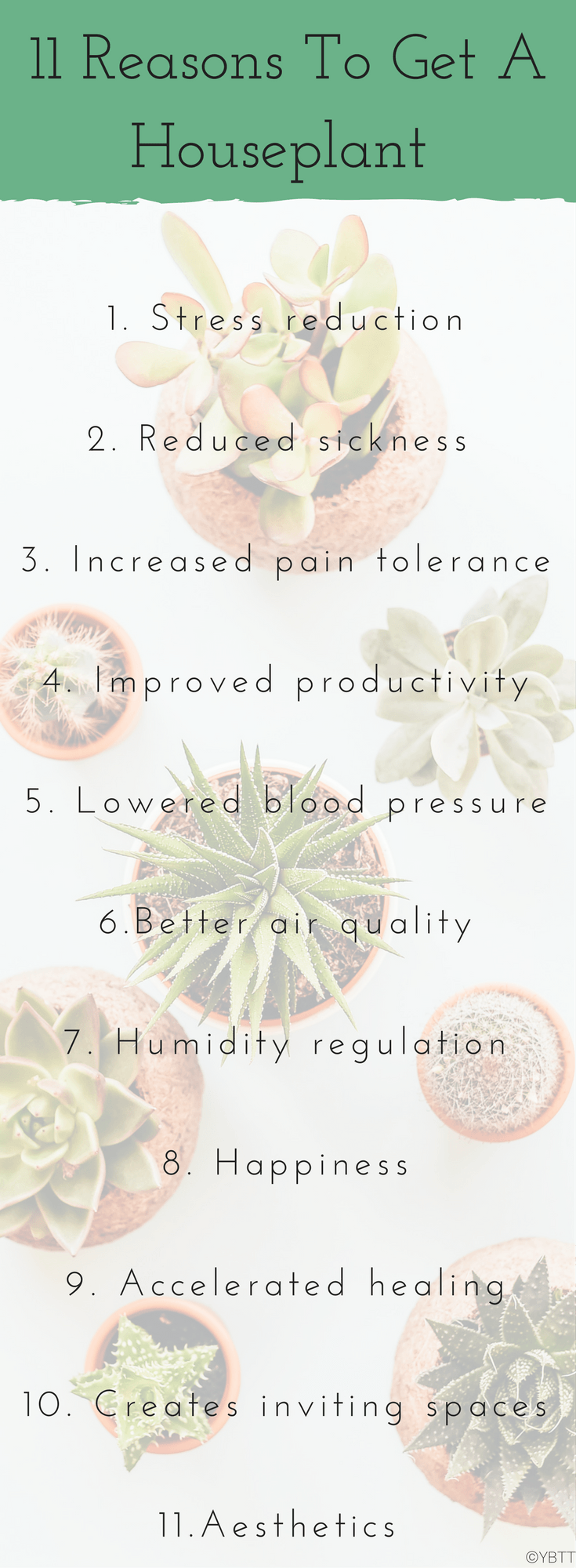Imagine this for a second.
Picture yourself sitting at your desk at work with a window overlooking a waterfall, mountains, or a forest.
Wouldn’t that be amazing?!
We all know that nature makes us happier, healthier, and more peaceful.
But so often, we are so caught up with work and family commitments that we forget to go outside and stay cooped up in our homes and offices.
If you’re like most of us, requesting a relocation to some secluded rainforest from HR isn’t going to happen either.
So what to do?…
Bring nature inside with houseplants!
Why you should get a houseplant
As humans, we’re naturally drawn to nature.
Science has shown that immersion in the natural world is good for you and in fact, makes you healthier, happier, and less stressed.
Indoor plants are a simple and affordable compromise to experience some of the benefits of nature indoors.
Houseplants help make inside air cleaner and healthier which ultimately, makes it easier to breathe. They reduce airborne cancer causing compounds such as formaldehyde and other hazardous indoor air pollutants.
Indoor plants contribute to both cleaner and healthier breathing spaces and are used in a variety of settings such as homes, businesses, schools, and medical facilities to help promote wellness.
In addition to being good for your body, house plants also offer immense value to your mental well-being, as well as adding aesthetic appeal and décor to your living or work spaces.
Benefits of houseplants
Here are 11 scientifically supported reasons to get yourself some houseplants.
1. Stress reduction
We all know that stress is dangerous for our health and well-being. Studies have confirmed that having plants in a room can drastically reduce a person’s level of stress.
2. Creates a welcoming space
Plants create a more attractive landscape by creating a welcoming environment. Upon entering a space with natural features such as a room with houseplants, people quite often feel more at ease, relaxed, and comfortable.
3. Increased pain tolerance
In a controlled hospital setting, a study confirmed that the presence of plants (both flowering and foliage-only varieties) significantly increased pain tolerance. Furthermore, the research found that flowering plants were even more effective at reducing pain than species with just foliage.
4. Improved productivity
In the workplace, many of us are glued to our computer screens. The prolonged exposure to these visual display terminals often lead to eye fatigue and tiredness. Having indoor plants strategically positioned (where they don’t cause any physical strain to see) can help reduce mental fatigue. Mental fatigue is known to significantly reduce productivity and negatively affect work performance.
5. Air quality
Volatile Organic Compounds (VOCs) enter your home via means such as carpets, electronic equipment, wallpaper. These substances are known to contribute to a condition known as Sick Building Syndrome that can cause many negative health effects. House plants have been found to be an effective and natural way to decrease symptoms of sick building syndrome by reducing carbon monoxide, carbon dioxide, and even formaldehyde concentrations.
6. Humidity regulation
Indoor plants contribute to humidity regulation by releasing moisture into the room. In areas such as offices or homes where the air is particularly dry, plants can be used to add humidity and improve the overall health and comfort of people living or working in that space.
7. Aesthetics
Indoor plants, whether in a home or professional setting are a simple way to beautify any space. Whether the plants are blooming or simply green foliage, they provide immense aesthetic value.
8. Happiness
Flowers are a beautiful way to inspire lasting happiness. In fact, people presented with flowers have reported to feel the lingering effects of that happiness even three days later.
9. Healing
Hospital patients who had a window facing nature as opposed to one facing a brick building experienced faster recovery time, took fewer and lower dose painkillers, and had experienced less postoperative complications than their peers.
10. Lowered blood pressure
Having plants inside, especially in stressful environments can be beneficial for the heart. The natural greenery has been found to lower systolic blood pressure. In contrast, high systolic blood pressure is linked to heart disease and death.
11. Less sick time
A study was conducted at the Agricultural University of Norway that surveyed 305 people in 3 different offices to determine how office plants affected workers’ health. Researchers found that the more plants and greenery found in offices, the less people got sick. Dry throats, headaches, dry skin, and coughs were some of the benefits experienced by individuals working in areas more densely filled with greenery.
Take away
Plants improve our overall feeling of wellbeing.
By creating a healthier and more beautiful relaxing environment, it comes as no surprise that indoor plants improve our quality of life.
If you can’t get outside as much as you would like, try the next best thing, and bring nature inside to you.
Do you have houseplants at home or in the office?
What kinds of benefits have you noticed from having them?


